

On our way out of Lafayette, we toured the Atchafalaya basin -- a giant
swamp that drains over 30 states. The gentleman below (Curtis), who was
our guide, was born on a floating log cabin not far from the Cypress grove you
see.
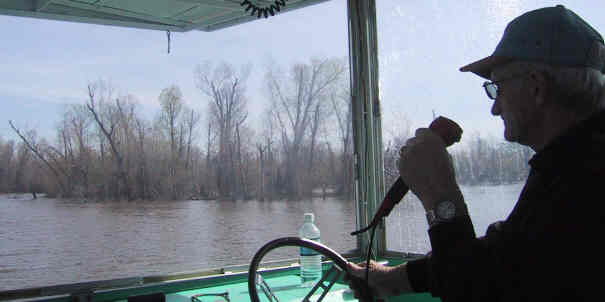
Even though we were the only people on this tour, Curtis insisted on using
the microphone, which he would occasionally have to whack to get functioning.
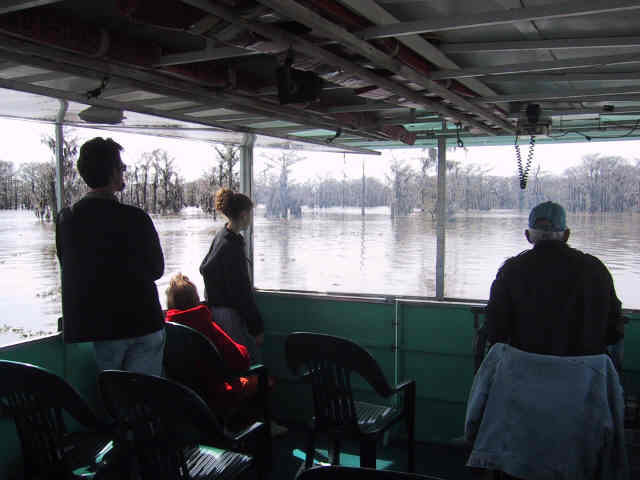
These are some of the better "swamp shots" we took while on the
tour. The trees are almost all Cypress. The stumps that are sometimes
visible are due to heavy logging over the past 200 years. Now all Cypress
are protected -- it takes 200 years for a Cypress to reach maturity. New cypress
cannot grow in water or cannot sprout underwater, although the trees can live
with the roots submerged in water. Since the Atchafalaya Basin was contained, no
new cypress trees have grown there.
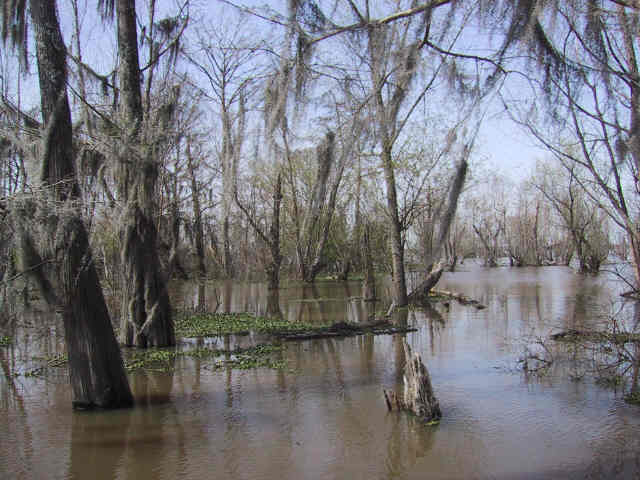
One of the most remarkable things about the basin is that it dries up almost
completely by late summer -- everything you see in these pictures will be a
Cypress forest in August.
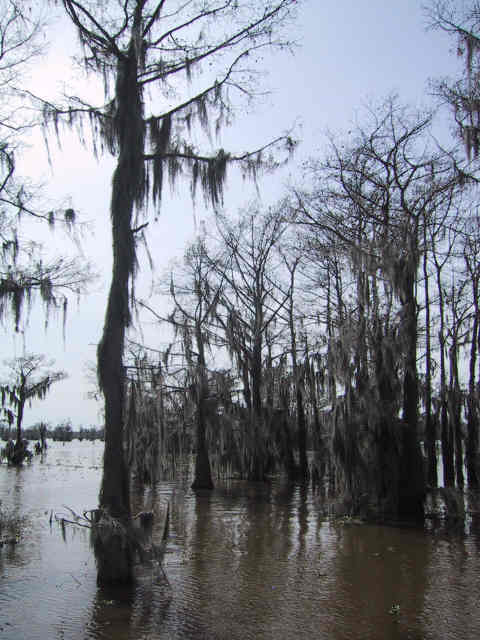
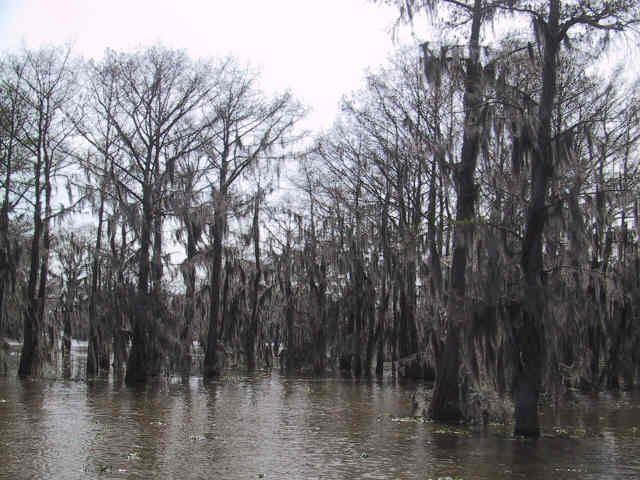
OK, let's play "spot the alligator". Can you find the gator
in the picture below?
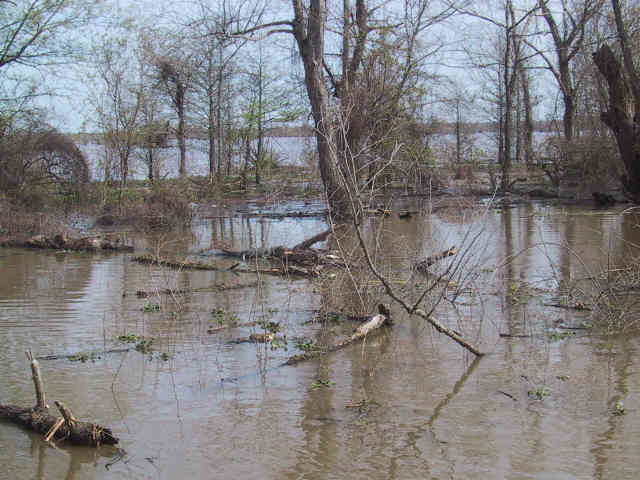
Here is a blow-up of him. 7 feet long, and one of the first to come out
of winter hibernation. Most of the gators are still sleeping in their
underground caves -- they do so for 4 or 5 months of the year. Since alligators
are cold-blooded, if you come across one before it is warmed up, in the spring,
it can barely move.
In addition to gators, we saw nutria, beaver, cormorants, duck, turtles and
various birds.
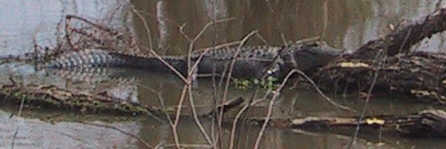
We also toured "Madewood", a river plantation home built by a
wealthy Southern man by the name of Thomas Pugh during the Civil War. The name
comes from the fact that the house was built almost entirely on-site, using
local materials. The wood is local Cyprus, and they built a brick kiln to
make the estimated 600,000 bricks needed for the structure. It was
spared from Sherman's march because the Pughs agreed to allow it to be used as
a Yankee field hospital. It is now privately owned and was restored by the
Marshall family; Mrs. Marshall still lives in the house, at 87 years.
Below is the parlor.
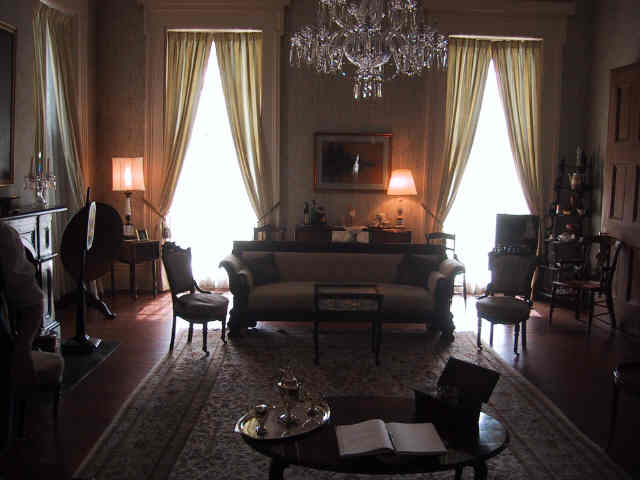
Here is the dining room. Madewood is also a bed-and-breakfast hotel,
offering guests full pension dinners.

This is the kitchen, operated at the time entirely by slaves. Mr. Pugh
had over 300 slaves working his home and sugar cane plantation.
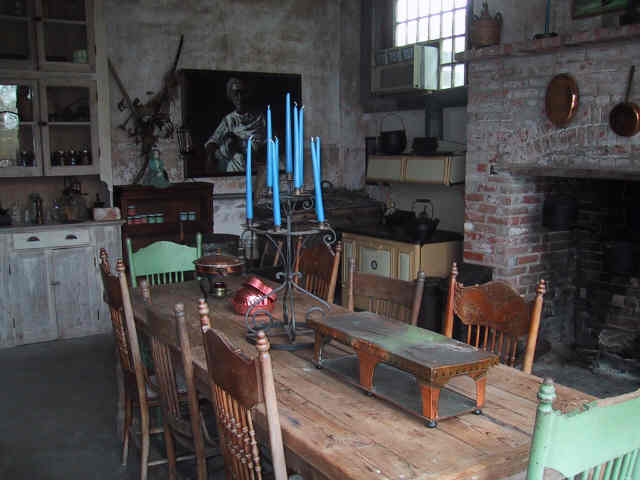
This is a shot of the rear entrance to the home. The columns looks a
bit crooked because of the way I stitched 2 photos together.
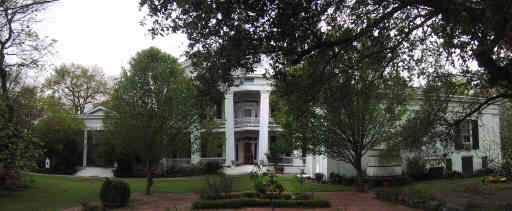
We toured the cemetery, where some of the Pughs are buried. Jody
snapped this image, just to proved that Doug was indeed along on the trip.
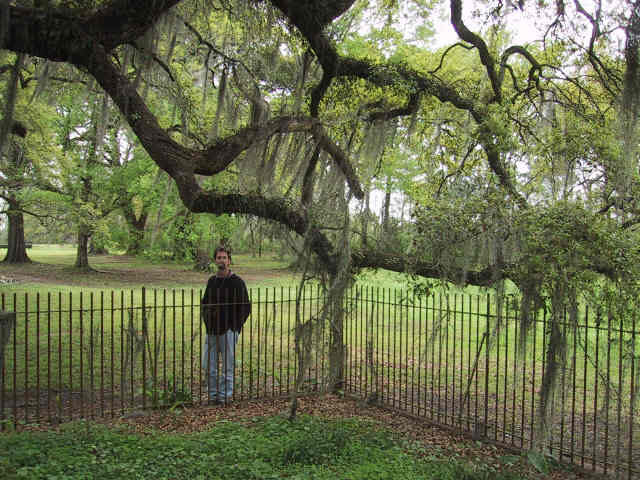
We continued driving that day, getting lost a few times, but eventually
ending up in New Orleans late that evening -- where we got the last spot in the
RV campground we had selected. We immediately nicknamed the place
"Sardine City", because we had never seen RVs packed in so tightly,
and with so little concern for anything but maximizing revenue. However,
it was cheap.
Inspired by the Cajun cooking lesson, Jody
made vegetarian Jambalaya that night -- it was fabulous.
March 7 - New Orleans
![]()